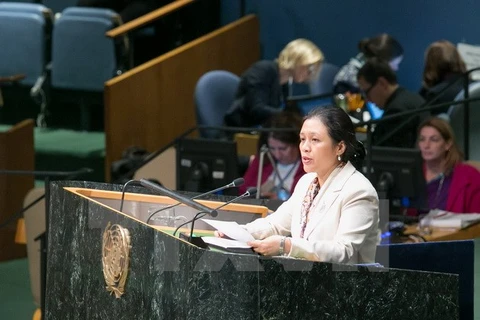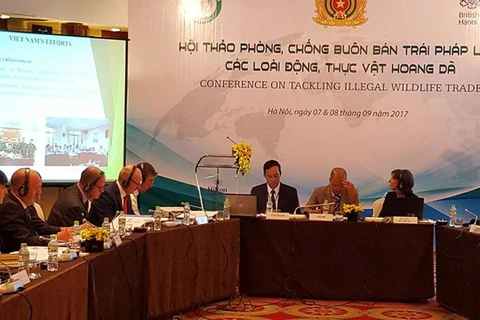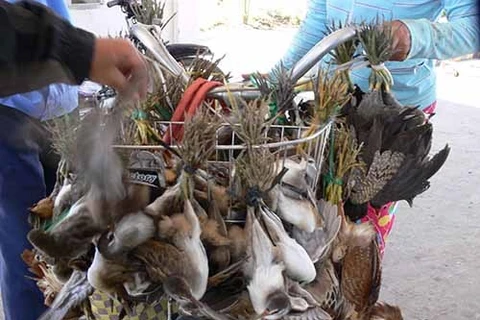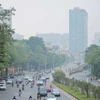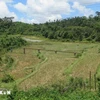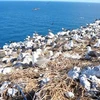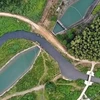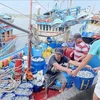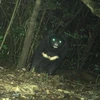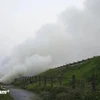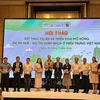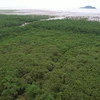HCM City (VNA) - A beautifully coloured frog found in the limestone mountains of Vietnam, two mole species found by a team of Vietnamese and Russian scientists, and the Vietnamese crocodile lizard are among 115 new species discovered by scientists in the Greater Mekong region in 2016, according to a new report released on December 21 by the World Wide Fund for Nature.
The report, Stranger Species, documents the work of hundreds of scientists from universities, conservation organisations and research institutes around the world who discovered 11 amphibians, two fishes, 11 reptiles, 88 plants and three mammals in Cambodia, Laos, Myanmar, Thailand and Vietnam.
It brought the number of new species of plants and animals discovered in the region between 1997 and 2016 to 2,524.
“More than two new species a week and 2,500 in the past 20 years speak to how incredibly important the Greater Mekong is to global bio-diversity,” Stuart Chapman, WWF-Greater Mekong regional representative, said.
“While the threats to the region are many, these discoveries give us hope that species from the tiger to the turtle will survive.”
The Vietnamese crocodile lizard, Shinisaurus crocodilurus vietnamensis, is a medium-sized lizard that lives in remote freshwater and evergreen forest habitats of southern China and northern Vietnam.
It is so severely threatened by habitat destruction, coal mining and collection for the pet trade that as few as 200 individuals could remain in the country.
The lizard, discovered by a research team headed by Prof Dr Thomas Ziegler, has been immortalised in a comic strip featuring “Shini,” who helps explain to school children the importance of protecting lizards.
The two moles, Euroscaptor orlovi and Euroscaptor kuznetsovi, which were discovered in streams and rivers in Vietnam’s north have given insights into the history and formation of Indo-Chinese mammals.
One of the discoverers, Dr Alexei Abramov, said one of the ways moles managed to maintain stable populations and escape poachers is because they live underground.
A vibrantly coloured frog, Odorrana Mutschmanni, is one of five new species discovered in the same karst forest in northern Vietnam by a research team led by Dr Nguyen Truong.
These species are threatened by quarrying for cement and road construction and their karst forest home desperately needs new protection.
The new discoveries come at a critical time: The Greater Mekong region is under intense development pressure from mines to roads to dams, threatening the survival of the natural landscapes that make it so unique.
Poaching for meat or the multi-billion dollar illegal wildlife trade puts additional pressure on the region’s wildlife, meaning many species could be lost before they are even discovered by science.
The illegal wildlife trade is decimating wildlife populations across the Greater Mekong, especially in the Golden Triangle where Laos, Thailand and Myanmar meet.
“WWF has launched an ambitious project to disrupt the trade by closing down the biggest markets in the Greater Mekong region,” Chapman added.
Working with partners and across borders, WWF attempts to combat illegal trade in key threatened species such as elephants, tigers and rhinos by promoting species protection legislation and effective trans-boundary cooperation, and improving law enforcement effectiveness at key border crossings. - VNA
VNA


